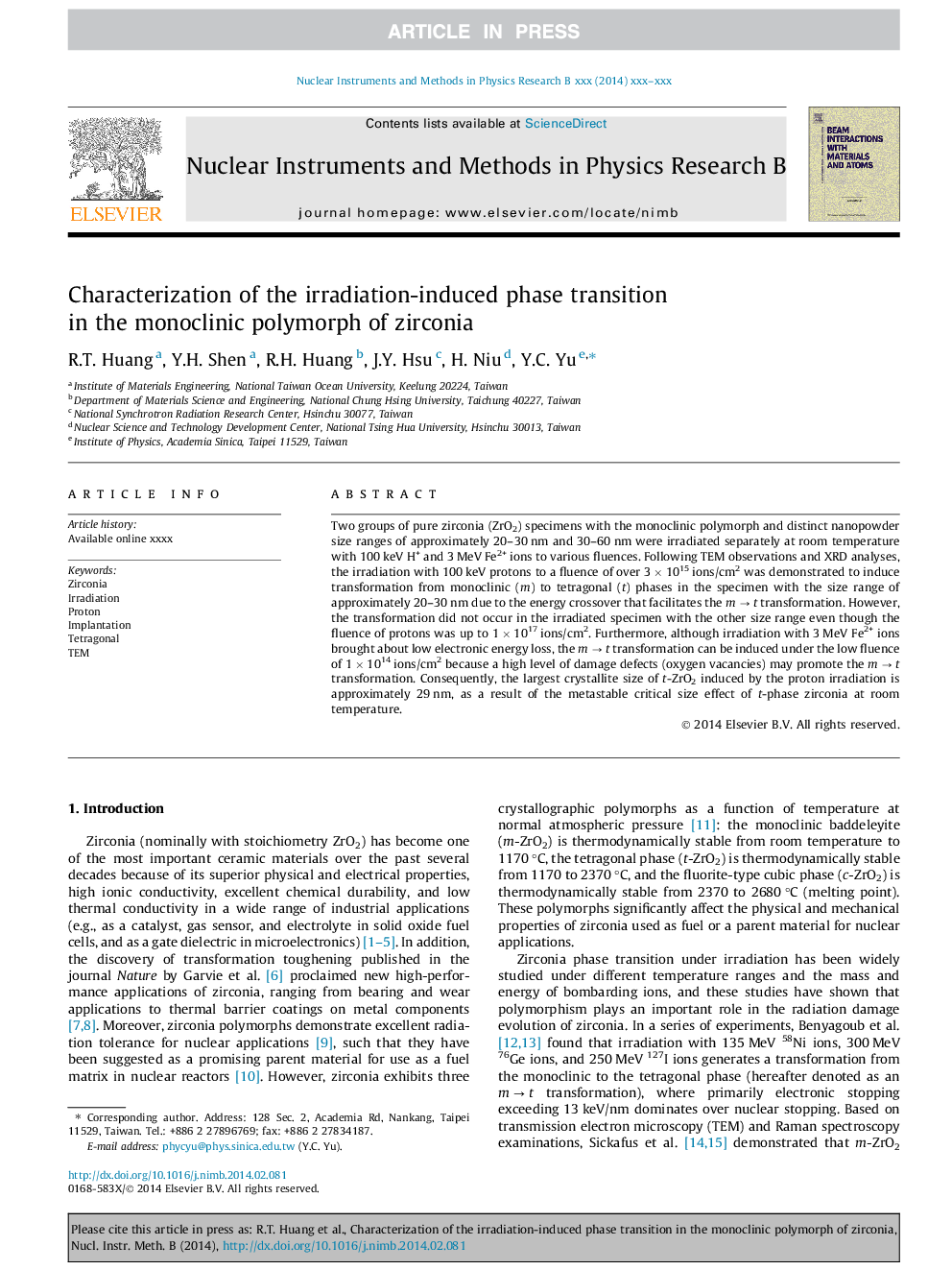| Article ID | Journal | Published Year | Pages | File Type |
|---|---|---|---|---|
| 8041572 | Nuclear Instruments and Methods in Physics Research Section B: Beam Interactions with Materials and Atoms | 2014 | 5 Pages |
Abstract
Two groups of pure zirconia (ZrO2) specimens with the monoclinic polymorph and distinct nanopowder size ranges of approximately 20-30 nm and 30-60 nm were irradiated separately at room temperature with 100 keV H+ and 3 MeV Fe2+ ions to various fluences. Following TEM observations and XRD analyses, the irradiation with 100 keV protons to a fluence of over 3 Ã 1015 ions/cm2 was demonstrated to induce transformation from monoclinic (m) to tetragonal (t) phases in the specimen with the size range of approximately 20-30 nm due to the energy crossover that facilitates the m â t transformation. However, the transformation did not occur in the irradiated specimen with the other size range even though the fluence of protons was up to 1 Ã 1017 ions/cm2. Furthermore, although irradiation with 3 MeV Fe2+ ions brought about low electronic energy loss, the m â t transformation can be induced under the low fluence of 1 Ã 1014 ions/cm2 because a high level of damage defects (oxygen vacancies) may promote the m â t transformation. Consequently, the largest crystallite size of t-ZrO2 induced by the proton irradiation is approximately 29 nm, as a result of the metastable critical size effect of t-phase zirconia at room temperature.
Related Topics
Physical Sciences and Engineering
Materials Science
Surfaces, Coatings and Films
Authors
R.T. Huang, Y.H. Shen, R.H. Huang, J.Y. Hsu, H. Niu, Y.C. Yu,
